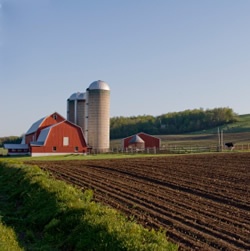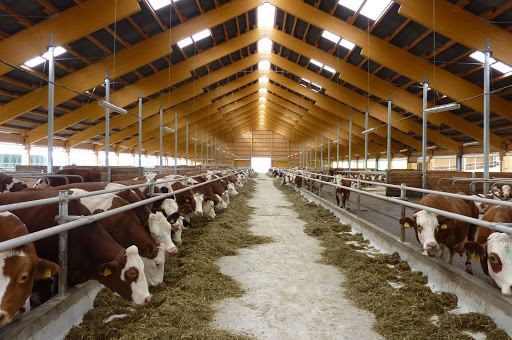ANIMAL DISEASE CONTAMINANTS AND DUST CONTROL
- Working on a farm or in farm buildings inevitably exposes individuals to dust, pollen, and animal disease contaminants. Whether it’s feeding animals, plowing fields, stacking hay, or filling trucks, these activities often generate clouds of dust or pollen. While some tasks may produce more dust than others, controlling dust is a crucial requirement for farm operations.

- The Air Cleaning BlowerTM (ACB) was purposefully designed to extract dust, pollen, fecal matter, and other particles from the air in dusty environments, all while eliminating the need for constant maintenance caused by clogging filters. These blowers effectively remove various types of farm and grain-processing dust without relying on filter elements or other media that require ongoing maintenance. Instead, they deliver clean air directly to your desired application.
APPLICATIONS ON FARMS
Pressurizing cabins on vehicles with clean air to keep out dust
Ventilating barns and stables
Controlling and recapturing escaping particles when filling silos, trucks and elevators
Pressurizing milk rooms, equipment and electrical rooms, and storage areas to keep out dust
Keeping motors and other electrical equipment ventilated and clean
Recapturing dust when loading silos and elevators
Helping to control the spread of animal disease contaminants among animals
Ventilating and keeping pollen and dust out of houses and other buildings
Controlling the dust caused by sorting potatoes and other vegetables
HOW AIR CLEANING BLOWERS WORK
- Air Cleaning BlowersTM (ACBs) operate by drawing dirty air into their housings, similar to other fans or blowers. Inside, a patented blower wheel utilizes centrifugal force in a unique manner to separate dust and particles from the air. The ACBs then eject the debris, typically outdoors, but they can also direct it back into the air column or conveyor loading a silo. Clean air is then blown out as desired. Remarkably, ACBs achieve this without the need for filter elements or media that require replacement or maintenance, saving on labor and costs.
- Unlike filters and air purifiers with filter elements, which often clog quickly and expensively, ACBs maintain consistent airflow, pressure, and energy consumption. Their lack of filter media ensures continuous operation without the need for frequent maintenance or repair.
- Additionally, ACBs can enhance the efficiency of equipment like evaporative coolers by blowing clean air, extending the lifespan of their media. Unlike cyclonic systems, ACBs do not spin contaminants and have no valves prone to clogging.
KEY FEATURES AND TESTING
- Another key feature that can be especially helpful to farmers is that the ACBs can remove rain, mist and snow from the air, helping the air stay dryer and reducing the load on any air conditioning, refrigeration or dehumidifying equipment. In addition, because there is no filter media catching that rain or snow there is nothing that will become wet or freeze up and prevent the air from passing through.
- Our ACBs underwent independent testing at a globally recognized filter-testing laboratory to validate their effectiveness. The results revealed that they remove over 98% of the mass of dust and other particles from the air. Specifically, the laboratory findings demonstrate that ACBs eliminate virtually all particles larger than 10 microns and nearly half of the particles down to 0.3 microns in size. This exceptional filtration capability ensures the removal of even the smallest particles, providing cleaner and healthier air.
- Originally engineered to thrive in demanding environments like steel mills, mining operations, and fertilizer plants, the Air Cleaning BlowerTM is adaptable to various farm settings. Our ACBs offer unparalleled effectiveness, making them indispensable for any type of farm operation. Their reliability is underscored by their current deployment by the US Military in the Middle East, where they ensure continuous cooling of air conditioners even amidst sandstorms.
